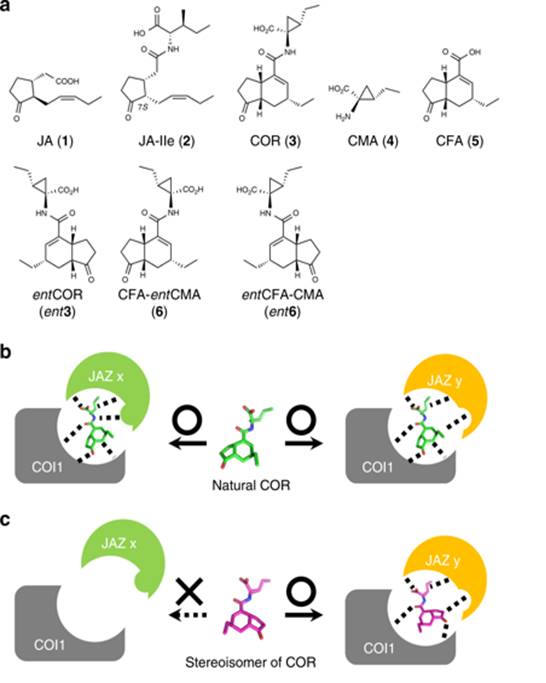
A rationally designed JAZ subtype-selective agonist of jasmonate perception (Nature Comms.)
Plant Science Research WeeklyMany plant hormones have pleiotropic effects, switching on and off multiple, seemingly unrelated processes. As an example, jasmonates both turn on herbivore defense responses and suppress growth. Takaoka et al. have elegantly separated these, by developing a jasmonate mimic that only activates defences.…

Metabolic Fate of Modified Nucleotides after RNA Turnover, an Overlooked Issue in RNA Modification
Research, The Plant Cell, The Plant Cell: In a NutshellChen et al. reveal a multilayer molecular protection system functioning in Arabidopsis and human cells https://doi.org/10.1105/tpc.18.00236
By Mingjia Chen and Claus-Peter Witte
Background: RNA possesses over 100 distinct posttranscriptional modifications in eukaryotic species. N6-methyladenosine…
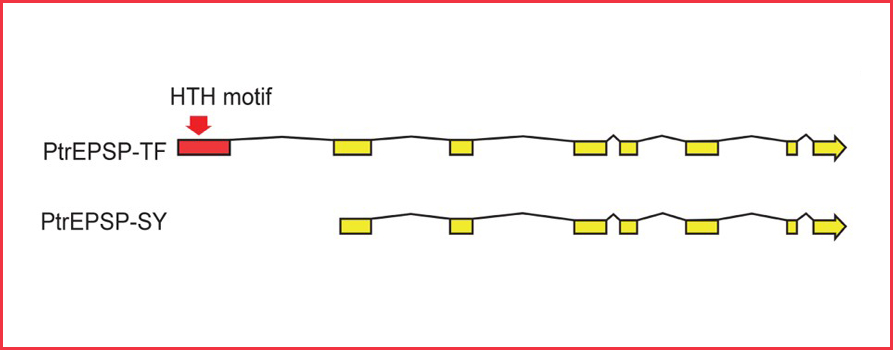
Old Gene, New Function
Research, The Plant Cell, The Plant Cell: In a NutshellXie et al. discover an EPSP synthase gene involved in the transcriptional regulation of the phenylpropanoid pathway in Populus trichocarpa The Plant Cell (2018). https://doi.org/10.1105/tpc.18.00168.
By Meng Xie, Wellington Mechuro, Jin-Gui Chen, and Gerald A. Tuskan
Background: 5-enolpyruvylshikimate…
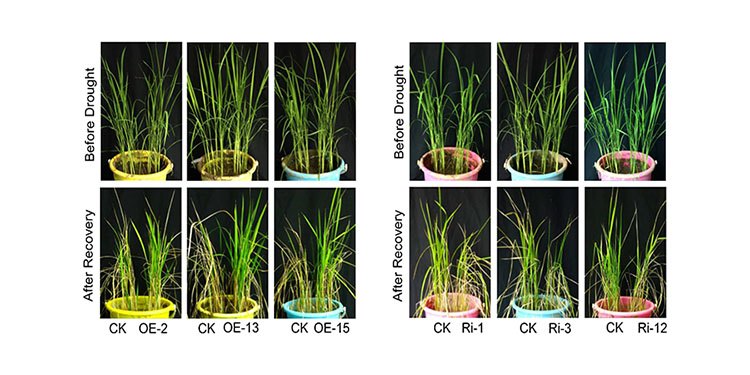
Newly Discovered Abscisic Acid Transporter in Rice
Research, The Plant Cell, The Plant Cell: In a NutshellYao et al. found that OsPM1 can move the plant hormone abscisic acid into rice cells. https://doi.org/10.1105/tpc.17.00770.
By Lingya Yao and Xiaochun Ge
Background: Abscisic acid (ABA) is an important plant hormone that regulates plant seed dormancy and stress responses, especially drought responses.…
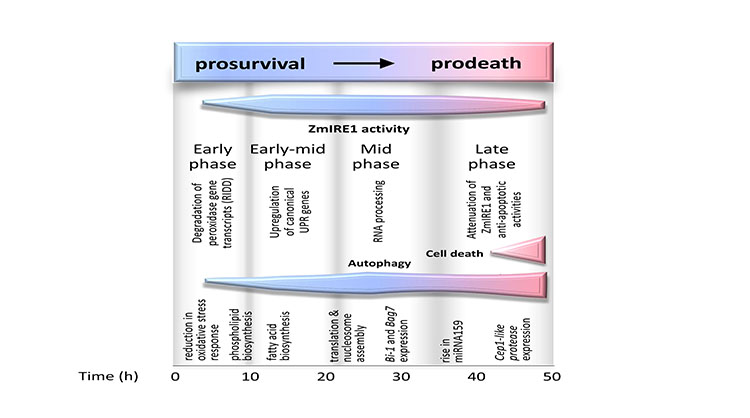
Understanding ER Stress in Maize
Research, The Plant Cell, The Plant Cell: In a NutshellBackground: Maize is one of the world’s leading crops that is used for food, feed, and fuel. Maize is vulnerable to adverse environmental conditions that lead to production losses. Such conditions can upset delicate cellular processes in maize cells such as protein folding in the endoplasmic reticulum…
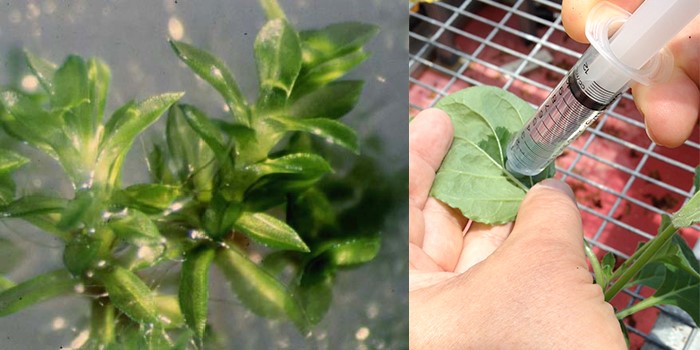
High Fiber Research: A Moss Arabinoglucan Synthase
Research, The Plant Cell, The Plant Cell: In a NutshellRoberts et al. investigate cell wall synthesis in Physcomitrella patens. The Plant Cell (2018). https://doi.org/10.1105/tpc.18.00082.
By Alison Roberts and Eric Roberts
Background: The health-promoting soluble fiber in whole grains is rich in mixed-linkage glucan (MLG), so called because it consists…
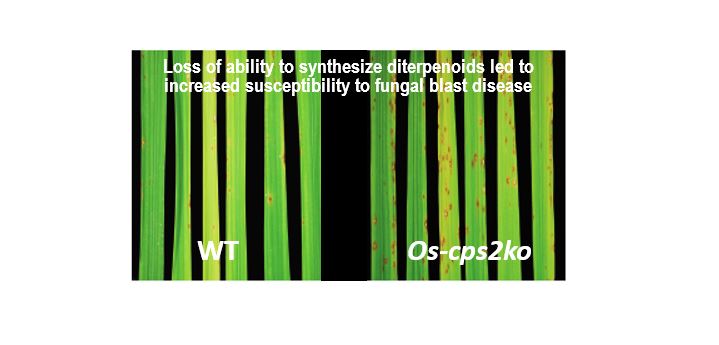
Diterpenoid Defense in Host- and Non-host Disease Resistance in Rice
Research, The Plant Cell, The Plant Cell: In a NutshellLu et al. show that diterpenoids contribute to disease resistance in rice. Plant Cell. (2018). https://doi.org/10.1105/tpc.18.00205
Background: Rice (Oryza sativa) is an important food crop. Diseases caused by the fungal blast pathogen Magnaporthe oryzae and bacterial leaf blight pathogen Xanthomonas…

Maintaining Cellular Phosphate
Research, The Plant Cell, The Plant Cell: In a NutshellSegami et al. investigate cellular phosphate homeostasis in Arabidopsis. Plant Cell https://doi.org/10.1105/tpc.17.00911
Background: Many biological reactions, including the biosynthesis of DNA, RNA, proteins, and polysaccharides, produce inorganic pyrophosphate (PPi). However, accumulation of PPi…
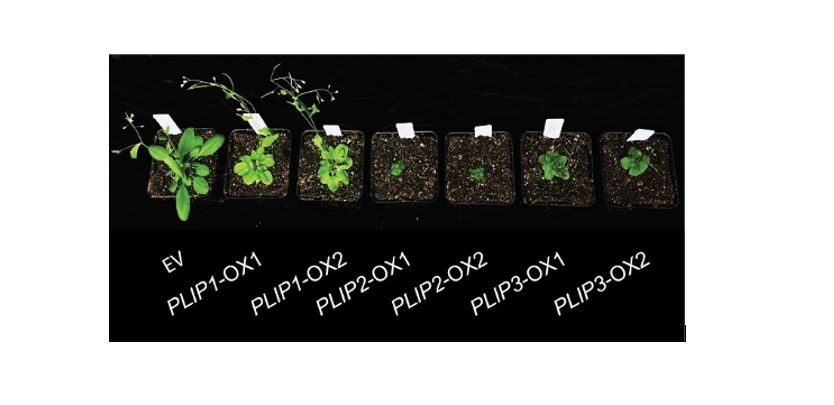
When Lipids Meet Hormones: Plants’ Answer to Complex Stresses
Research, The Plant Cell, The Plant Cell: In a NutshellWang et al. show that abscisic acid-inducible genes encode lipid degrading enzymes that release polyunsaturated fatty acids from chloroplast lipids as precursors for jasmonic acid production leading to biotic defenses in Arabidopsis. Plant Cell doi.org/10.1105/tpc.18.00250
By Kun Wang and Igor Houwat
Background:…

